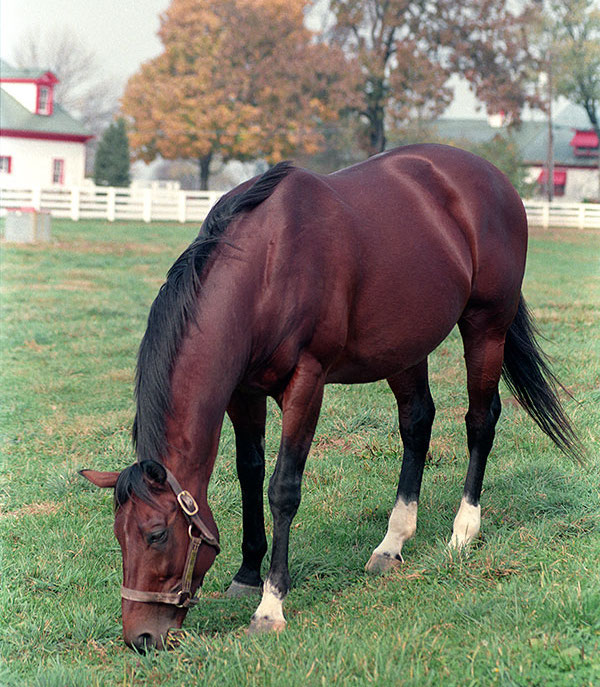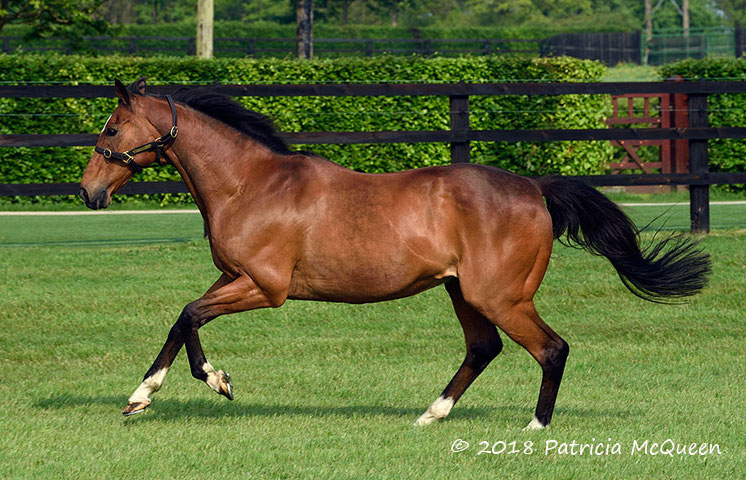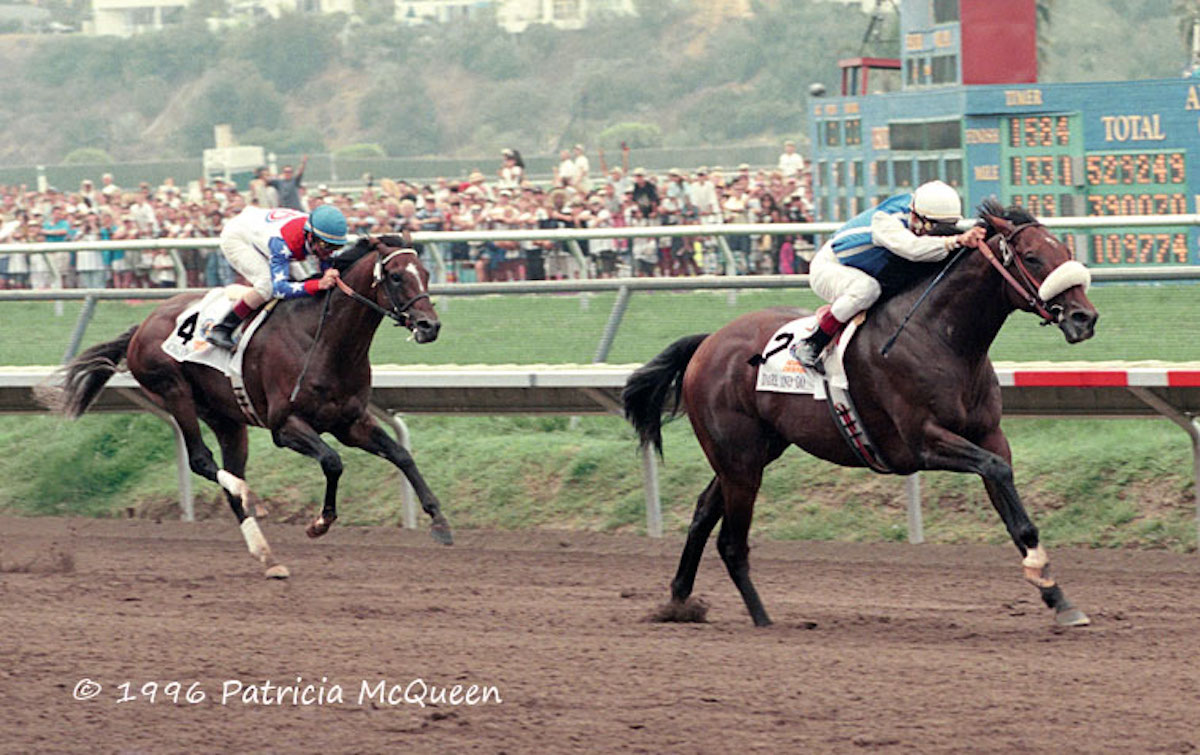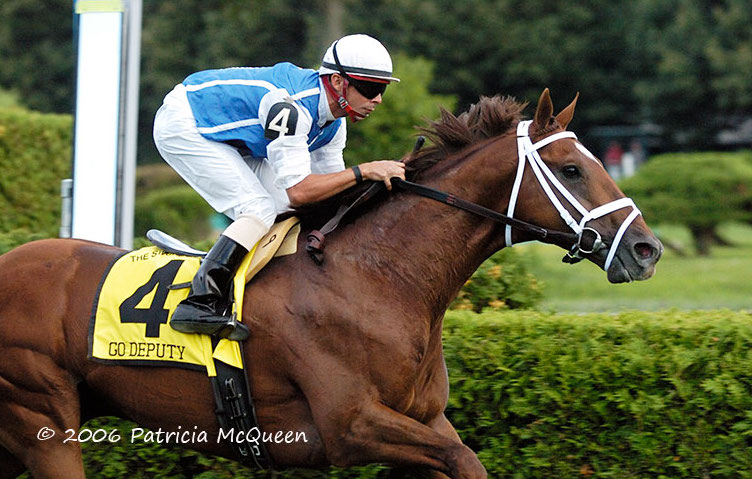
In the latest of her popular series, Patricia McQueen throws the spotlight on Betty’s Secret and Partygoer, a pair of mares whose class shone through in their high-profile progeny more than it did on the racetrack
Most of Secretariat’s top-producing daughters had established themselves as racehorses with at least some stakes-class efforts. For example, Terlingua and Weekend Surprise were multiple graded-stakes winners; Six Crowns and Secrettame were stakes winners; and Sister Dot, Lady Winborne, Celtic Assembly and Rosa Mundi were all stakes-placed winners.
However, two superior daughters who each produced two G1 winners fall into a different category: Betty’s Secret was unraced, while Partygoer won only a maiden race in 10 starts and never graduated to stakes company.
Betty’s Secret: bred to be something special
Born in Florida on May 4, 1977, the chestnut Betty’s Secret was certainly bred to be something special. Her dam was the Prince John mare Betty Loraine, a stakes-placed winner who produced 1974 G1 Prix du Jockey Club (French Derby) winner Caracolero.
Out of Gay Hostess, Betty Loraine was a half-sister to both Majestic Prince and Crowned Prince. The latter was the 1971 champion two-year-old in England, while Hall of Famer Majestic Prince won the 1969 Kentucky Derby and Preakness Stakes.
 Gay Hostess herself was out of multiple stakes producer Your Hostess, a full-sister to Kelso’s sire Your Host. Others from this rich female line include 1998 champion three-year-old colt Real Quiet.
Gay Hostess herself was out of multiple stakes producer Your Hostess, a full-sister to Kelso’s sire Your Host. Others from this rich female line include 1998 champion three-year-old colt Real Quiet.
Betty Loraine produced three foals by Secretariat. The first in 1976 was the filly Magic One, a winner of two of four starts. Betty’s Secret followed in 1977, and in 1980 came the colt Prince Secretariat, who was also unraced.
As a broodmare, Magic One produced the stakes-placed winning filly G. U. Magic. Another daughter, Determined One, produced French stakes winner Nemuro, who also won several hurdle races in England and Ireland in the latter half of the 1990s. Betty’s Secret, though, would be the mare in this family to produce a bona-fide hero over jumps, the great Istabraq. But that’s getting ahead of the story.
First G1 winner out of Secretariat mare
Owned by EP Taylor of Windfields Farm during most of her broodmare years, Betty’s Secret was bred at age three to Windfields’ superlative stallion Northern Dancer. The resulting bay colt, born in Maryland on February 12, 1981, was sold for $340,000 as a yearling to Luigi Miglietti.
Named Secreto, he was sent to the care of trainer David O’Brien in Ireland. There, Secreto won his only race at two, and the following spring won the G3 Tetrarch Stakes at the Curragh. That made him the third stakes winner out of any Secretariat mare, following Uno Roberto (out of Miss Secretariat) and Sir Simon (out of Secala).
In just his third start, Secreto was the starting favorite for the Irish 2,000 Guineas; although he finished third, he was barely more than a half-length behind none other than Sadler’s Wells, later to earn lasting fame in his second career as a breed-shaping Coolmore stallion.
Secreto’s next outing was to go down in racing folklore as he went to the Derby at Epsom in June, where he faced undefeated champion El Gran Senor, another son of Northern Dancer bred by Taylor.
In a courageous performance, Secreto turned back the champion in an all-out duel through the last quarter-mile to win by a short-head. It was the only defeat of El Gran Senor’s career.
With the victory, Secreto became the first G1 winner out of a Secretariat mare, a little more than 11 weeks before Chief’s Crown won the 1984 Hopeful Stakes at Saratoga. Unfortunately, Secreto never raced again, and entered stud in 1985 at historic Calumet Farm in Kentucky.
While he sired some 30 stakes winners, he was somewhat disappointing at stud given his pedigree. He did lead the freshman sire list in 1988, in large part because of multiple American stakes winner Lea Lucinda; he also sired that year’s champion two-year-old filly in Italy, Miss Secreto.
Japanese champion
Secreto was sent to Japan beginning with the 1993 breeding season. His best Japanese runner was Tamuro Cherry, the country’s champion two-year-old filly in 2001. His leading earner at $1.25 million was Japanese stakes winner Field Bomber, out of the Secretariat mare Hail To Mom.
The next eight foals from Betty’s Secret were also bred by Taylor; they included stakes winner Interrex and the stakes-placed winners From Sea To Sea and Classic Secret. Most of them were sold at auction, three for at least $1m.
After Taylor died in 1989, Betty’s Secret was sold privately to Sheikh Hamdan Al Maktoum, who had established the Shadwell name as a global force in racing and breeding.
The mare was sent to Shadwell’s Derrinstown Stud in Ireland. There, she was under the care of Tom Deane, who was quoted in The Legend of Istabraq, by Michael Clower: “She was a fusspot but also a real tough lady, and she could be a bit difficult to handle. The mares always pal up in groups of two or three when they are out in the paddocks and most of them, once they’re in their group, settle quite happily and won’t attempt to fight each other. Betty’s Secret was different. If she ever got her buddy in a corner, she would whip round a lash out at the poor mare.”
The legend of Istabraq
The tough mare produced three foals for Shadwell, and it was the last one who completed her broodmare career in spectacular fashion. Born May 23, 1992, the Irish-bred Istabraq was by the Northern Dancer stallion Sadler’s Wells. Trained by John Gosden, he was ordinary enough on the Flat for his breeder Sheikh Hamdan, but when tried over jumps by new owner JP McManus and trainer Aidan O’Brien, he was nothing short of sensational.
 In a legendary jumps career, Istabraq won 23 of the 26 hurdle races he finished, and was second in the other three. Istabraq succeeded in almost all the important hurdle races in Britain and Ireland, including three consecutive editions of the Champion Hurdle at Cheltenham – the most important hurdle race in the world – and four straight runnings of the Irish Champion Hurdle at Leopardstown. The celebrated gelding was retired to his owner’s Irish farm, where he still enjoys life today at age 30.
In a legendary jumps career, Istabraq won 23 of the 26 hurdle races he finished, and was second in the other three. Istabraq succeeded in almost all the important hurdle races in Britain and Ireland, including three consecutive editions of the Champion Hurdle at Cheltenham – the most important hurdle race in the world – and four straight runnings of the Irish Champion Hurdle at Leopardstown. The celebrated gelding was retired to his owner’s Irish farm, where he still enjoys life today at age 30.
In addition, a number of major stakes winners descend from Betty’s Secret’s daughters, including G1 winners Smooth Roller (US), Close Conflict (Italy), and Carbonel (Macau). And Istrabraq wasn’t the only hurdler to come from Betty’s Secret; there are other stakes-winning jumpers descending from her female line.
Partygoer’s son spoiled the celebrations
While Partygoer’s descendants didn’t have that same flair for jumping, one of her two G1-winning sons will be forever remembered as the horse who ended the great Cigar’s streak of consecutive wins at 16.
Dare And Go, Partygoer’s 1991 foal, started his career in France but became a multiple G1 winner upon his return to America. In the 1996 Pacific Classic, Cigar was attempting to win his 17th straight race, which would have surpassed Citation’s then-record 16 consecutive wins in the modern era. However, Dare And Go spoiled the party, stunning everyone by beating the champion by 3½ lengths.
Partygoer hailed from the breeding lines of Tartan Farms and Wheatley Stable. Her dam was the stakes-producing Nearctic mare Quiet Charm, who was out of the Princequillo mare Cequillo. This family includes G1 winner and top sire Fappiano, champion Dr. Patches and fellow G1 winners Ogygian, Honour And Glory and Quiet American.
As a racehorse for Tartan, Partygoer didn’t have her family’s racing talent. Born in Florida on April 28, 1984, the bay filly was far back in two New York starts as a two-year-old. Racing in Maryland the next year, she placed in three of six starts before finally breaking her maiden in her ninth start. That came at Pimlico on October 4, 1987. After one last start, an unplaced effort on October 20, she was sold for $215,000 at the Tartan Farms/John A. Nerud Dispersal that November as a racing or broodmare prospect.
She was purchased by Wertheimer et Frere, a racing and breeding partnership carrying on a generations-old family business by brothers Alain and Gerard Wertheimer. They retired the filly to their broodmare band and bred her to Fappiano in 1988. The resulting foal was the winner Pianogoer.
Partygoer’s 1990 foal died, and the mare was then bred to Alydar. That mating produced Dare And Go, born in Kentucky on February 15, 1991.
 Racing for the brothers in the name of La Presle Farm, Dare And Go was a stakes winner in France at two and three. Returned to America in 1994, he finished second in three G1 races on the turf: the Secretariat Stakes, Hollywood Derby and Hollywood Turf Cup. He found the main track more to his liking the next year; among his big dirt wins were the G1 Strub Stakes at four and the Pacific Classic at five. In total, he won seven of 22 starts and finished second or third 12 times; he earned $1,608,972.
Racing for the brothers in the name of La Presle Farm, Dare And Go was a stakes winner in France at two and three. Returned to America in 1994, he finished second in three G1 races on the turf: the Secretariat Stakes, Hollywood Derby and Hollywood Turf Cup. He found the main track more to his liking the next year; among his big dirt wins were the G1 Strub Stakes at four and the Pacific Classic at five. In total, he won seven of 22 starts and finished second or third 12 times; he earned $1,608,972.
After Dare And Go, Partygoer produced seven consecutive foals; six were winners, including the French stakes-placed runner Going Green. The mare was barren for 1999, and then produced her second G1 winner, Go Deputy, on January 25, 2000.
Late-blooming turf star
A son of champion Deputy Minister, Go Deputy made all his starts in America for the Wertheimers. The Kentucky-bred didn’t make his racing debut until he was three, when he won three of five starts, all in New York. Sidelined for more than a year, he failed to win in four starts as a five-year-old.
Go Deputy blossomed at age six. The turf runner won three of his 10 starts in 2006, with five seconds and one third while racing in top company. He won the G1 Sword Dancer Invitational and the G2 Bowling Green Handicap, and among his stakes placings were seconds in the G1 Gulfstream Park Breeders’ Cup Stakes and the Canadian International. His only off-the-board finish that year was in the Breeders’ Cup Turf.

In total, Go Deputy won six of 19 starts, with eight seconds and a third, for earnings of $1,118,640. Exported for stud duty to South Africa, his best runner was 2016 South Africa Triple Crown winner Abashiri.
In 2002, the year of her death, Partygoer produced one last foal, the winning colt Firejack, by Dixieland Band. All in all, she produced 11 named foals. Only four were fillies, and all four produced stakes winners themselves, carrying on the family name.
Something accomplished by so many Secretariat mares.
Saratoga sizzle: how blue-collar hero Thunder Rumble put New York-breds on the map
Nancy Sexton: Who’s the daddy? Top ten greatest sires of the last 100 years (part two)
Nancy Sexton: Who’s the daddy? Top ten greatest sires of the last 100 years (part one)
Children of Secretariat: Sister Dot – the mare who outdid herself by producing a champion
View the latest TRC Global Rankings for horses / jockeys / trainers / sires


